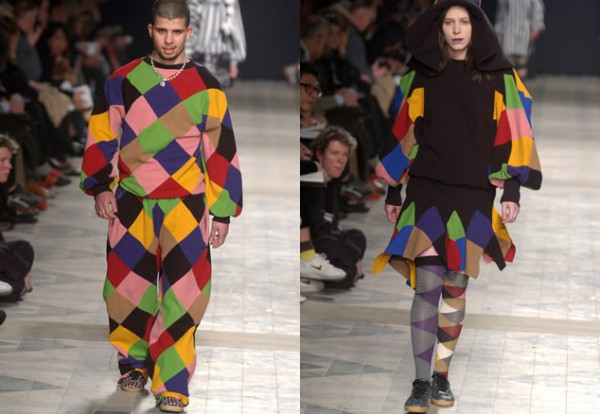
The central theme of this heritage day (Armoe Troef in Dutch, Poverty Stricken) can be interpreted in many different ways. MoMu chose to shed light on an age-old technique: patchwork. Everyone knows the multi-coloured bedcovers made of printed cottons in many different prints, that are often, and rightfully so, associated with rustic North America. But also in Europe, patchwork is part of a long tradition.
The origins of patchwork are hard to fathom, but generally, the idea is accepted that the mending of clothes was at its origin. On top of a hole or sign of usage, people sewed strips of cloth, and depending on the character and costliness of the piece of clothing, attention was given to the finishing of the borders and the choice of fabric. Also, the practice of imitating costly embroidery, by means of sewing of many different cut-out motifs on top of a base textile, is possibly at the origins of the patchwork technique. Clothing frugality , mostly because of the sparseness and costliness of clothes , but also the creative search for an economical way to make beautifully decorated textiles, played a part in the development of this technique.
In patchwork, a distinction is made between the sewing of pieces of fabric on a base cloth, the so-called appliquأ© technique, and the sewing together of pieces of cloths into a larger whole, mostly described as mosaic. Both for appliquأ© and mosaic, leftover pieces of garments were used. These leftovers were pieces that fell next to the pattern during the cutting of clothes or interior textiles, and which were recuperated this way. Worn garments were sometimes also cut up, but this happened rather in the higher classes, where clothes weren’t worn until they literally fell apart. By re-using textiles from garments, people honoured the memory of their beloved, or their memories from childhood. Mostly, during the nineteenth century, patchwork was a result of craftwork from women in the higher echelons of society, for whom the patchwork was a pastime, or from less wealthy women who worked on the patchwork for their own use or as a side-job.
Mosaic patchwork was primarily used to make bedcovers, which were lined and filled for warmth. To keep the filling in its proper place, the covers were stitched across, the so-called quilts. In the lavish interiors of the late 19th century, patchwork could also be found on poufs and used as decorative runners, like antimacassars. Appliquأ© was used as a decorative technique for clothing, but mosaic patchwork was rare. Fashionable clothing executed in mosaic patchwork can be found in the 1970s when the hippie culture reappropriated traditional handicrafts.
Ten years ago, at the start of the last decade, there was a remarkable presence of mosaic patchwork in the autumn/winter collections of a few Belgian and international designers. In Veronique Branquinho’s autumn/winter collection 2000/2001, the technique was applied to a pair of trousers and a velvet dress. Dirk Bikkembergs used the typical hexagonal pattern for a leather men’s jacket for his spring/summer collection 2002. A playful theme, frivolous and reminiscent of the harlequin, can be found in the menswear and womenswear collections of autumn-winter 2002/2003 by Bernhard Willhelm. In the same season, Nicolas Ghesquiأ¨re created a few futuristic-looking dresses for Balenciaga , made of sewn-together strips of different sizes and forms in varying synthetic materials.
Heritage Day
Sunday May 1st, from 10AM to 6PM
http://www.erfgoeddag.be





















